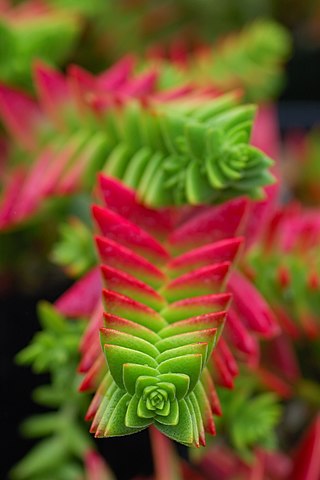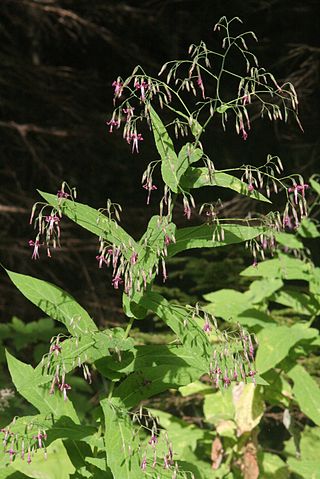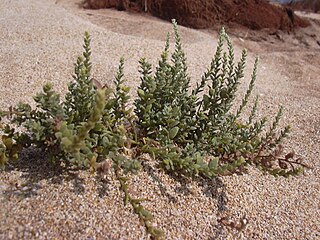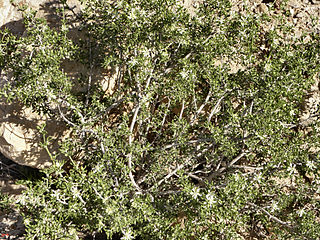
A botanical garden or botanic garden is a garden with a documented collection of living plants for the purpose of scientific research, conservation, display, and education. It is their mandate as a botanical garden that plants are labelled with their botanical names. It may contain specialist plant collections such as cacti and other succulent plants, herb gardens, plants from particular parts of the world, and so on; there may be glasshouses or shadehouses, again with special collections such as tropical plants, alpine plants, or other exotic plants that are not native to that region.

Smilax ornata is a perennial trailing vine with prickly stems that is native to Mexico and Central America. Common names include sarsaparilla, Honduran sarsaparilla, and Jamaican sarsaparilla.

Nathaniel Wolff Wallich was a surgeon and botanist of Danish origin who worked in India, initially in the Danish settlement near Calcutta and later for the Danish East India Company and the British East India Company. He was involved in the early development of the Calcutta Botanical Garden, describing many new plant species and developing a large herbarium collection which was distributed to collections in Europe. Several of the plants that he collected were named after him.

Crassula is a genus of succulent plants containing about 200 accepted species, including the popular jade plant. They are members of the stonecrop family (Crassulaceae) and are native to many parts of the globe, but cultivated varieties originate almost exclusively from species from the Eastern Cape of South Africa.

Lalbagh Botanical Garden or simply Lalbagh, is an botanical garden in Bangalore, India, with an over 200-year history. First planned and laid out during the dalavaiship of Hyder Ali, the garden was later managed under numerous British Superintendents before Indian Independence. It was responsible for the introduction and propagation of numerous ornamental plants as well as those of economic value. It also served a social function as a park and recreational space, with a central glass house dating from 1890 which was used for flower shows. In modern times, it hosts two flower shows coinciding with the week of Republic Day and Independence Day. As an urban green space along with Cubbon Park, it is also home to numerous wild species of birds and other wildlife. The garden also has a lake adjoining a large rock on which a watchtower had been constructed during the reign of Kempegowda II.

Sir George King was a Scottish-born British botanist who was appointed superintendent of the Royal Botanic Garden, Calcutta in 1871, and became the first Director of the Botanical Survey of India from 1890. He was recognised for his work in the cultivation of cinchona and for setting up a system for the inexpensive distribution of the anti-malarial quinine throughout India through the postal system.

The Acharya Jagadish Chandra Bose Indian Botanic Garden, previously known as Indian Botanic Garden and the Calcutta Botanic Garden, is a botanical garden situated in Shibpur, Howrah near Kolkata. They are commonly known as the Calcutta Botanical Garden and previously as the Royal Botanic Garden, Calcutta. The gardens exhibit a wide variety of rare plants and a total collection of over 12,000 specimens spread over 109 hectares. It is under Botanical Survey of India (BSI) of Ministry of Environment and Forests, Government of India.

Prenanthes is a genus of plant in the family Asteraceae, often referred to as rattlesnake root.

Aralia nudicaulis is a species of flowering plant in the ivy family Araliaceae. It is native to northern and eastern North America.

Aechmea nudicaulis is a bromeliad species in the genus Aechmea, which is often used as an ornamental plant. This species is native to Central America, the West Indies, central and southern Mexico, and northern and central South America.

Botanical Survey of India (BSI) located in Kolkata, West Bengal, India. It was founded on 13 February 1890, is Government of India Ministry of Environment, Forest and Climate Change's organization for survey, research and conservation of plant wealth of India, flora and endangered species of India, including by collecting and maintaining germplasm and gene bank of endangered, patent and vulnerable plant species.
Launaea rhynchocarpa is a species of flowering plant in the family Asteraceae. It is found only in Yemen. Its natural habitats are subtropical or tropical dry forests and subtropical or tropical dry shrubland.

Cressa is a genus of plants in the morning glory family known generally as alkaliweeds. These plants are native to the tropical and subtropical areas of the world. They are clumpy and low-growing but usually have erect stems covered white-haired, green leaves. They produce tiny white flowers about half a centimeter across.

Teesdalia is a genus in the plant family Brassicaceae. They are herbaceous plants native mostly to Europe and to the Mediterranean region. Shepherdscress is a common name for these plants.
Amal Amin is an Egyptian botanist.
Hermenegild Santapau (1903-1970) was a Spanish born naturalized Indian Jesuit priest and botanist, known for his taxonomical research on Indian flora. He was credited with the Latin nomenclature of several Indian plant species. A recipient of the Order of Alphonsus X the Wise and the Birbal Sahni Medal, he was honoured by the Government of India in 1967, with the award of Padma Shri, the fourth highest Indian civilian award for his contributions to the society.

Iris aphylla is a species in the genus Iris, it is also in the subgenus Iris, and in the section Iris. It is a rhizomatous perennial, from Asia to Europe. It is found in Azerbaijan, Russian Federation, Czech Republic, Germany, Hungary, Poland, Belarus, Ukraine, Bulgaria, Albania, Former Yugoslavia, Italy, Romania and France. It has dark green or bright green, sword-shaped, long grass-like leaves, that die/fade away in the winter. It also has a slender stem, with several branches and green and purplish spathes. It has 3–5 large flowers, in shades of bright purple, purple, violet, dark blue, blue-violet and dark violet, which bloom between spring and early summer. Occasionally, they re-bloom in the autumn, before the seed capsule is formed. It is cultivated as an ornamental plant in temperate regions. There is one known subspecies Iris aphylla subsp. hungarica Hegi.
Stenotaenia is a genus of flowering plants in the family Apiaceae, native to Anatolia, the Transcaucasus, and Iran. Their fruit have numerous vittae on their dorsal and commissural surfaces, a trait shared with the genus Opopanax.

Zygophyllum dumosum, the bushy bean-caper, is a species of flowering plant in the family Zygophyllaceae, native to Egypt, the Sinai Peninsula, and the Levant. It is a dominant shrub in the highlands of the Negev Desert.

Teesdalia nudicaulis, the common shepherd's-cress, is a species of flowering plant in the family Brassicaceae. It is native to Madeira, Morocco, and nearly all of Europe, but has gone locally extinct in Switzerland and Hungary. Additionally, it has been introduced to the east and west coasts of the United States, and to southern Chile. An annual, it is found in meadows, fields, and roadsides, typically in anthropogenically disturbed soils.
















